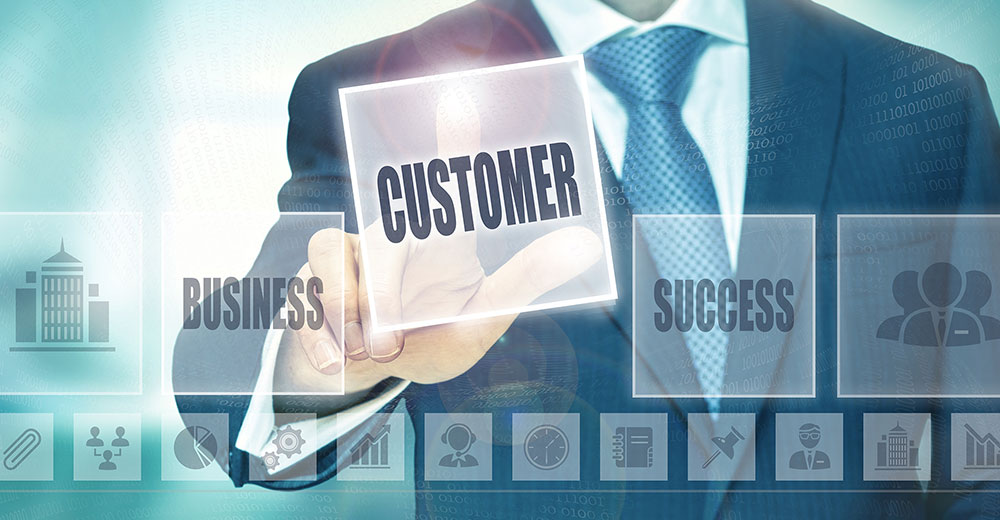Business executives often believe a necessary CRM tool is working for them when, in reality, it does just the opposite. Take the case of what brands hope to achieve with customer data and what they actually can do.
This stark disconnect underpins the need for technology that improves a company’s agility, scalability, and ability to generate meaningful business outcomes from customer data.
A recent report sponsored by SAP CX found that virtually all (99%) business leaders believe customer data should be integrated into business processes and is a competitive advantage. But a mere 2% of those surveyed say they do this extremely successfully.
That report, Generating Stronger Business Outcomes Through Customer Data, released in association with Harvard Business Review Analytic Services, surveyed senior business leaders on the challenges of building a strong customer data foundation.
Customer data platforms (CDP) are in a nascent stage of their lifecycle. Businesses are still sort of getting their arms around it, observed Sameer Patel, chief marketing and solutions officer at SAP CX / CRM.
One big takeaway from the study is the large gap between what business leaders want to do and what they are actually doing, according to Patel.
“Also, a paradigm shift is happening in the industry which came out of the research as well. Over the next 18 months, 60% of the companies will boost spending in the area of data knowledge and insight. So they are getting it that this is really important,” he told CRM Buyer.
That will be a significant shift in how they think about CX, and they will move away from just this narrow point solution. The new view is more of data intelligence at the core, he added in identifying the report’s second big takeaway.
Meeting Multiple Changes in Data Usage
The survey also revealed that 94% of respondents say that keeping CX consistent across customer touchpoints is important to their organization. However, only 42% agree that they can do this now.
Patel noted that the trend toward data intelligence stems largely from changes in customer needs and expectations and is also in response to the changing notion of centralized data.
“This is something that is very critical to us at SAP when we think about how data is going to be used. The old paradigm of data emanated primarily from vendors who have been in the business of CRM,” he said.
Now, data from the last mile, or the edge, is needed to understand a customer’s preferences. This impacts marketing and selling to customers effectively.
“Going forward, it is also a whole other set of data, such as the availability of inventory that matches profiles, return preferences, and return behaviors of buyers. There is a whole host of data that does not sit in the typical CX stack that could make you a lot smarter about customers,” Patel said about the use of these new data sets.
Holistic Customer Views
The third big takeaway from the study is that centralized data models will become a critical element of data intelligence.
The problem for marketing platforms is how to introduce a more holistic, 360-degree view of data that is not conveniently limited to CRM or CX technologies. Instead, it must go deep into the supply chain.
Once you start to have that more holistic view of your customers, the use of customer data is just as valuable to the marketing and sales ends of your business when it is bound to the procurement side of your business.
You can evaluate how you stack up for inventory choices you make around logistics, and then you can better evaluate where warehouses need to be placed to reach a customer, noted Patel.
“So you can start to see why a chief information officer, or a chief procurement officer, or even a chief financial officer starts to really care about customer data. It is this 360-degree view that is truly giving me data insight about the customer,” Patel explained.
How Customer Data Platforms Work
This new approach to using customer data relies on two types of data sets, Patel explained using SAP CX’s platform as a reference.
One is data that all customer data platforms generally have. That data may be locked up in the Salesforce automation system.
The second set is data on preferences about a customer stored in either billing applications or in the returns management application. Another avenue is trying to correlate data in procurement versus a customer’s interest profile.
“That is a whole set of data that is locked up today in your backup If you are a retailer,” said Patel. “The retailer has to spend lots of money integrating and bringing those datasets in.”
The first question is how natively set up is your customer data platform to be able to ingest data. Existing SAP customers may have a shortcut in expanding to a CDP. SAP’s CRM software has the back office and front office application stack.
“We have the ability to take some of that weight off of the end of the retailer to be able to put all that data in one system,” Patel added.
Beyond that is third-party data sitting on the public web of business customers. Access to that data is governed completely by state laws, what the customer wants, and what permissions the customer might have given.
This data structure is no different from any of the CDP vendors, suggested Patel. Applying things like intelligence will make a much more holistic view.
Beyond CRM Systems
CDPs involve more than adding software extensions to an existing CRM platform. Whether built from the ground up or integrated into an existing system, three essential elements must exist.
One is a holistic data platform to gather supply and demand signals about the individual customer in one place. Then, you need controls for privacy and identity profiles. These govern how the vendor engages with customers to respect their privacy and security and comply with regulations.
“Very often, what happens is that a lot of the customer data platforms have edge data, but they will not have 360 data. Those platforms are also not built from the ground up to have identity and consent,” noted Patel. “These policies and regulations need to be embedded as capabilities within your platform.”
Ultimate Goal: Increasing Sales or Improving CX?
That discussion regarding CDP does not happen enough. The goal is to maintain a balance. What are the customer retailer’s business objectives? What is the desired customer experience driving how the company does business?
We need to be able to understand both dimensions equally. Patel answered that the customer experience is most definitely based on product comparisons.
“This notion that every B2B and B2C business is going to have to pay a lot more attention to customer experience — we help our customers figure out and empower them to do that.”
The second question is not discussed enough, which impacts the operational efficiency of the actual business, whether it is a B2B business or retail or B2. In most businesses, the cost of inefficient business decisions inevitably gets passed on to the consumer. In that sense, it does impact customer experience and absolutely affects how they look at their business, Patel observed.
“Our view is that when you look at this from a 360-degree standpoint, you truly get a real visual on what a particular end user values. That data is now just as prevalent to the operational side [as the] supply chain side.”























































